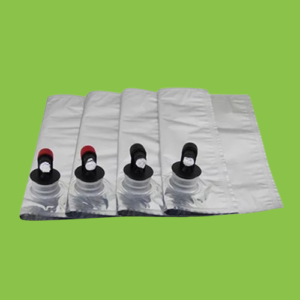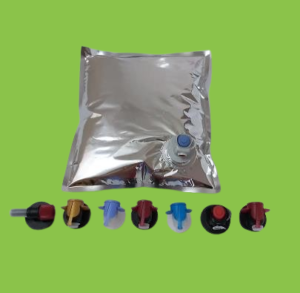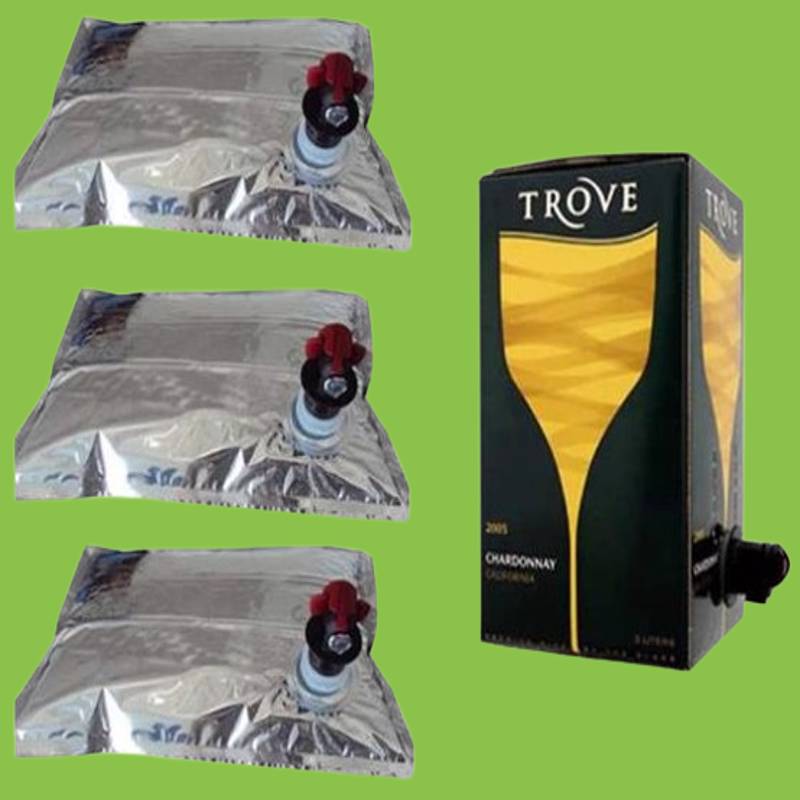What is Aseptic liquid bag-in-box bags?
Aseptic bag-in-box bags are a type of packaging commonly used for the storage and transportation of liquids, especially in the food and beverage industry. The term "aseptic" refers to the sterile or uncontaminated nature of the packaging process, which helps extend the shelf life of the contents without the need for refrigeration.
10 easily overlooked points about aseptic liquid bag-in-box bags
- Barrier Properties: Aseptic bag-in-box bags are designed with multiple layers to provide excellent barrier properties, protecting the contents from external factors like light, oxygen, and contaminants.
- Extended Shelf Life: The aseptic packaging technique helps extend the shelf life of the packaged product by maintaining sterility, making it suitable for storing liquids like juices, dairy, and sauces without the need for refrigeration.
- Sustainability: These bags are often made from materials that are recyclable and contribute to sustainability efforts, reducing the environmental impact compared to traditional packaging methods.
- Customizable Sizes: Aseptic bag-in-box bags come in various sizes, allowing manufacturers to choose the most suitable packaging for their product, whether it's a small beverage or a large quantity of liquid.
- Ease of Dispensing: The design of the bag-in-box system includes a dispensing tap, making it easy to pour and dispense the contents without spillage or waste.
- Cost-Effective: Due to their lightweight and efficient design, aseptic bag-in-box bags can be cost-effective for both packaging and transportation compared to other bulk packaging options.
- Versatility: These bags are versatile and can be used for a wide range of products, including not only liquids but also powders and semi-liquid substances.
- Reduced Packaging Waste: The bag-in-box packaging system often results in less overall packaging waste compared to traditional rigid containers, contributing to a more eco-friendly approach.
- Tamper-Evident Features: To ensure product integrity, aseptic bag-in-box bags often come with tamper-evident features, giving consumers confidence in the safety and quality of the product.
- Ease of Storage: The flexible nature of the bags allows for efficient storage as they can be stacked easily, optimizing warehouse space and logistics.
When using aseptic bag-in-box bags, it's important to follow proper handling and storage guidelines to maintain the quality and safety of the packaged products.
How to find Aseptic liquid packaging suppliers in China?
- Google Search:
- Use specific search queries like "Aseptic packaging suppliers in China" or "Aseptic bag-in-box manufacturers China."
- Explore the search results and visit the websites of potential suppliers.
- B2B Platforms:
- Check popular B2B platforms that connect buyers with suppliers. Some examples include Alibaba, Made-in-China, and Global Sources.
- Use relevant keywords such as "Aseptic packaging" or "Bag-in-box suppliers" on these platforms to find potential suppliers.
- Review supplier profiles, product listings, and customer reviews on these platforms.
- Trade Directories:
- Explore online trade directories that list manufacturers and suppliers. Examples include Kompass, TradeIndia, and ThomasNet.
- Look for companies specializing in aseptic packaging or bag-in-box solutions in the directory.
- Industry Associations and Trade Shows:
- Check industry associations related to packaging and attend trade shows or exhibitions in China. These events often feature suppliers showcasing their products.
- Connect with potential suppliers you meet at these events.
- Professional Networks:
- Use professional networks like LinkedIn to search for aseptic packaging suppliers in China.
- Join relevant industry groups and forums to seek recommendations or directly connect with suppliers.
When evaluating potential suppliers, consider factors such as their experience, product quality, certifications, and manufacturing capabilities. It's also advisable to communicate with the suppliers directly to discuss your specific requirements and obtain detailed information about their products and services.
The cost of box-in-box liquid packaging bag are higher than that of spout bag?
- Bag-in-Box Packaging:
- Advantages:
- Extended Shelf Life: Aseptic bag-in-box solutions contribute to a longer shelf life for liquids.
- Cost-Effective: The efficient design and lightweight materials can reduce packaging and transportation costs.
- Versatility: Suitable for a wide range of liquids and customizable in various sizes.
- Dispensing Convenience: Equipped with dispensing taps for controlled pouring.
- Advantages:
- Spout Bags:
- Advantages:
- Convenient Dispensing: Spout bags come with an integrated spout for easy pouring and dispensing.
- Portability: Often more portable and convenient for on-the-go use.
- Lightweight: Similar to bag-in-box, spout bags are typically lightweight, contributing to cost-effective transportation.
- Customizable: Available in various sizes and shapes, allowing for customization.
- Advantages:
- Cost Comparison:
- The cost comparison between bag-in-box packaging and spout bags can vary based on factors such as materials used, size, printing, and production volume.
- In general, bag-in-box packaging is known for its cost-effectiveness due to efficient design and material choices.
- Spout bags, while also cost-effective, might have variations based on specific design features and material considerations.
It's essential to consider the specific requirements of your product, such as the volume of liquid, shelf life needs, and the desired dispensing method. Both bag-in-box packaging and spout bags have their advantages, and the cost can be influenced by factors specific to your packaging goals and product characteristics. Manufacturers and suppliers can provide more accurate cost estimates based on your unique requirements.
When will I choose the liquid bag in box bag or spout bag?
The choice between a bag-in-box (BIB) bag and a spout bag depends on various factors related to your product, market, and packaging requirements. Here are considerations to help you decide when to choose each type:
Choose Bag-in-Box (BIB) Bags When:
- Larger Volume Packaging: Bag-in-box solutions are well-suited for larger volumes of liquids. If you need to package a substantial quantity of a liquid product, such as juices, sauces, or industrial liquids, BIB bags offer efficient and cost-effective packaging.
- Extended Shelf Life: If your product requires an extended shelf life without the need for refrigeration, aseptic bag-in-box packaging can help maintain product freshness and quality over a longer period.
- Cost Efficiency: Bag-in-box packaging is known for its cost-effectiveness, especially for bulk packaging. The lightweight design reduces transportation costs, making it a economical choice for large quantities.
- Dispensing Convenience: BIB bags typically come with dispensing taps, making them convenient for controlled pouring and dispensing. This is advantageous for industrial applications or scenarios where precise dispensing is important.
- Versatility: Bag-in-box solutions are versatile and can be used for a variety of liquids, including beverages, liquid foods, and more. The packaging is adaptable to different viscosities and product types.
Choose Spout Bags When:
- Portability and Convenience: Spout bags are more portable and convenient for on-the-go use. If your product is intended for individual or single-use portions, spout bags can be a suitable choice.
- Retail Packaging: Spout bags are often used for retail packaging of beverages, baby food, sauces, and other liquid products. The integrated spout provides easy pouring, enhancing the consumer's experience.
- Brand Differentiation: If you want your product to stand out on the retail shelf, spout bags offer opportunities for unique shapes, sizes, and branding. The packaging itself can be a part of your product's identity.
- Flexible Sizing: Spout bags come in various sizes, allowing for flexibility in packaging smaller quantities. This can be advantageous for products aimed at individual consumers.
- Ease of Use: Spout bags are designed for easy and mess-free dispensing. The integrated spout and cap provide convenience for consumers, making them suitable for products consumed over multiple occasions.
Ultimately, the choice between bag-in-box bags and spout bags depends on your specific product, target market, and packaging goals. Consulting with packaging experts and suppliers can help you determine the most suitable solution based on your unique requirements.
How about the material option for liquid bag in box packaging bag?
The material options for bag-in-box (BIB) packaging bags can vary based on the specific requirements of the product being packaged and the desired characteristics of the packaging. Here are some common materials used for bag-in-box packaging:
- Multilayer Films:
- Structure: Multilayer films are composed of several layers of different materials, each serving a specific purpose.
- Properties: This structure allows for customization, providing barrier properties to protect against oxygen, light, and external contaminants.
- Polyethylene (PE):
- Structure: Polyethylene is a common polymer used in packaging, and it can be part of the multilayer film structure.
- Properties: PE provides flexibility and durability to the packaging. It is often used as an inner layer for its excellent sealing properties.
- Polyethylene Terephthalate (PET):
- Structure: PET is another polymer that may be used in the composition of the multilayer film.
- Properties: PET offers transparency and good barrier properties, making it suitable for protecting the contents from light and oxygen.
- Ethylene Vinyl Alcohol (EVOH):
- Structure: EVOH is often included in multilayer films for its excellent oxygen barrier properties.
- Properties: EVOH helps prevent oxygen from permeating the packaging, which is crucial for products sensitive to oxidation.
- Aluminum Foil:
- Structure: Some bag-in-box packaging may include a layer of aluminum foil.
- Properties: Aluminum foil provides excellent barrier properties against light, oxygen, and moisture. It is commonly used in aseptic packaging to maintain product sterility.
- Nylon:
- Structure: Nylon is occasionally used in multilayer films.
- Properties: Nylon contributes to the strength and puncture resistance of the packaging, enhancing its overall durability.
- Recyclable Materials:
- Sustainability Focus: With increasing emphasis on sustainability, there is a growing interest in using recyclable materials for bag-in-box packaging. Some manufacturers offer options with recyclable films.
When choosing the material for bag-in-box packaging, it's essential to consider factors such as the type of liquid being packaged, shelf life requirements, environmental considerations, and any regulatory requirements. Working with packaging experts and suppliers can help you select the most suitable material structure for your specific application. Additionally, ensure that the chosen materials comply with any relevant food safety regulations and industry standards.
Aseptic liquid bag in box Bags needs to be customized?
1. Kindly inform that here we have some standard size for packaging 3L, 5L, 10L, 15L, 20L.
plz check as followings:



2. If must, it can be customized as your requested size and volume etc.
The customization of aseptic bag-in-box bags depends on various factors, including the specific requirements of the product, branding, and the preferences of the manufacturer. Here are aspects of aseptic bag-in-box bags that can be customized:
- Size and Volume:
- Aseptic bag-in-box bags come in a range of sizes to accommodate different volumes of liquid. Manufacturers can customize the size of the bags based on the specific quantity of the product they are packaging.
- Material Composition:
- The material composition of the bag, including the multilayer film structure, can be customized based on the product's needs. This customization may involve selecting specific polymers or incorporating barrier layers like aluminum foil for enhanced protection.
- Printing and Branding:
- Manufacturers can customize the printing on the exterior of the bag to include branding, product information, logos, and other design elements. This allows for effective brand communication and differentiation on the retail shelf.
- Dispensing System:
- The dispensing system, including the type of tap or fitment, can be customized based on the application. Different dispensing options may be chosen for beverages, liquid foods, or industrial liquids, depending on the requirements.
- Tamper-Evident Features:
- Customized tamper-evident features can be added to the bag to enhance product safety and provide consumers with visible assurance of the integrity of the packaged product.
- Sustainability Features:
- Manufacturers may choose to incorporate sustainable features into the bag design, such as using recyclable materials or providing information on eco-friendly packaging practices.
- Technology Integration:
- Some aseptic bag-in-box solutions may allow for technology integration, such as QR codes for traceability or smart packaging features.
- Fitments and Accessories:
- Customized fitments, closures, or accessories may be added based on specific product requirements. This includes selecting the appropriate fitment for dispensing the liquid.
- Regulatory Compliance:
- Customization may also involve ensuring that the bag design complies with relevant regulatory standards and food safety requirements.
In conclusion, when considering customization for aseptic bag-in-box bags, it's crucial to work closely with packaging experts and suppliers. They can provide guidance on the optimal customization options based on the characteristics of the liquid product, the intended market, and any specific branding or functional requirements. Customization ensures that the aseptic bag-in-box solution aligns with the unique needs and goals of the manufacturer and enhances the overall packaging effectiveness.


